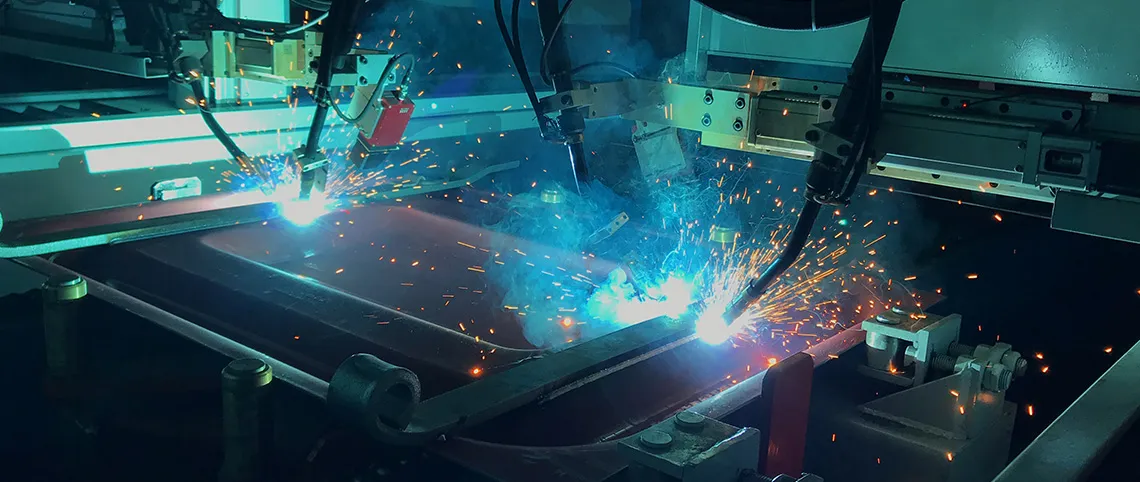Nov . 12, 2024 21:00 Back to list
gas line check valve
Understanding Gas Line Check Valves Function and Importance
Gas line check valves are critical components in gas distribution systems that ensure the safe and efficient transport of gases, such as natural gas and propane. These valves are designed to prevent backflow, which can pose significant safety risks and operational inefficiencies. In this article, we will explore the functionality, importance, and maintenance of gas line check valves in detail.
What is a Gas Line Check Valve?
A gas line check valve, also known as a non-return valve, is a mechanical device that allows gas to flow in one direction only. When gas flows in the intended direction, the valve opens, enabling it to pass through. However, if there is a reversal in flow—such as might occur during a drop in pressure or system failure—the valve closes automatically. This mechanism is essential for maintaining the integrity of gas delivery systems, as it prevents the return of gas, which could lead to leaks, contamination, or hazardous situations.
The Importance of Gas Line Check Valves
1. Safety Assurance The primary function of check valves is to ensure the safety of gas systems. Backflow can introduce dangerous situations, including potential explosions or the release of toxic gases. By preventing backflow, check valves protect both equipment and human lives.
2. Efficiency of Operation Use of gas line check valves enhances the efficiency of gas systems. When gas can only flow in one direction, the entire system can operate at optimal pressure levels, leading to better fuel efficiency and reduced energy costs.
3. Protection of Equipment Check valves help safeguard expensive equipment from damage. Backflow can lead to hazardous conditions in meters, compressors, and regulators, which may result in costly repairs or replacements.
4. Compliance with Regulations Many local and national regulations require the installation of check valves in gas distribution networks. Compliance ensures that companies meet the necessary safety standards and avoid penalties.
Types of Gas Line Check Valves
Several types of check valves are used in gas line applications, each chosen based on specific requirements
- Swing Check Valves These valves have a hinged disc that swings open or closed depending on the flow direction. They are commonly used in large-diameter pipes.
gas line check valve

- Lift Check Valves Utilizing a piston mechanism, lift check valves allow gas to pass through when the pressure is sufficient to lift the disc. They are ideal for high-pressure applications.
- Tilting Disc Check Valves This design features a disc that tilts with the flow, providing a quick sealing action. They are suitable for high-flow applications and are effective in reducing turbulence.
Maintenance of Gas Line Check Valves
Regular maintenance of gas line check valves is essential for ensuring their longevity and reliability. Here are a few key maintenance practices
1. Regular Inspections Inspect valves periodically for signs of wear, corrosion, or leakage. This typically involves visual checks and pressure tests to ensure they function properly.
2. Cleaning Keep the valve body and its components clean from debris and contaminants that might hinder operation. In some cases, disassembling the valve for a thorough cleaning may be necessary.
3. Lubrication Although many check valves are designed to operate without lubrication, some models may benefit from periodic lubrication of moving parts to prevent sticking.
4. Replacement of Worn Parts Components such as seals and discs can wear out over time. Replacing these parts promptly can prevent more significant issues down the line.
5. Professional Servicing Engaging qualified technicians for servicing and repairs can help ensure that valves are maintained according to industry standards.
Conclusion
Gas line check valves play a vital role in ensuring the safety, efficiency, and reliability of gas distribution systems. Understanding their function, types, and maintenance requirements is crucial for anyone involved in the installation or operation of gas lines. By taking the appropriate measures to utilize and maintain these devices, individuals and companies can safeguard their operations while ensuring compliance with safety regulations. In the ever-evolving world of energy distribution, the importance of these valves cannot be understated.
-
Why Metric Trapezoidal Thread is Ideal for Precision Motion ControlNewsAug.05,2025
-
The Unique Properties of a Block of Granite for Industrial UseNewsAug.05,2025
-
The Role of Flanged Y Strainers in Preventing Pipeline ClogsNewsAug.05,2025
-
The Importance of Regular Calibration for Master Ring GagesNewsAug.05,2025
-
How a Cast Iron Surface Table Enhances Accuracy in ManufacturingNewsAug.05,2025
-
Comparing Different Check Valve Types for Optimal Flow ControlNewsAug.05,2025
Related PRODUCTS









